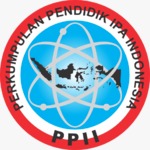Analisis Perubahan Garis Pantai Menggunakan Citra Satelit Landsat 8 dengan Metode Linear Regression Rate di Wilayah Pesisir Kecamatan Kuta
DOI:
https://doi.org/10.29408/kpj.v9i2.29955Keywords:
Coastal Change, Landsat 8, NDWI, LRR, Accretion, ErosionAbstract
Coastal areas are dynamic environments and are vulnerable to natural processes and human activities, making regular monitoring important for sustainable management. This study analyzes coastal changes along the Kuta coastal area, which includes Pantai Jerman, Kuta, Legian, and Seminyak, using Landsat 8 satellite imagery through the application of the NDWI analysis and the Linear Regression Rate (LRR) method over the period 2014–2022. The NDWI is derived using Band 3 (green) and Band 5 (near-infrared) to accurately classify the boundary between water and land. The LRR method is employed to calculate the trend of coastal line shifts from temporal data, yielding a detailed estimation of the coastal displacement rate. The study results indicate that the Kuta coastal area undergoes changes dominated by mild accretion, with an average coastal shift of 1.50 m/year, while mild erosion occurs at an average of 1.30 m/year. Overall, the coastal area experienced an accretion of 9.52 ha and an erosion of 4.55 ha.
References
Aryastana, P., Eryani, I. G. A. P., & Candrayana, K. W. (2017). Perubahan garis pantai dengan citra satelit di Kabupaten Gianyar. Paduraksa, 5(2), 70-81.
BAPPEDA Kabupaten Badung. (2023). Analisis risiko perubahan iklim dan adaptasi pesisir Kabupaten Badung. Jurnal Ruang, Universitas Udayana. https://ojs.unud.ac.id/index.php/ruang/article/download/19460/12894
CERC (Coastal Engineering Research Center). 1984. Shore protection manual volume I (4th ed.). U.S. Army Coastal Engineering Research Center.
Dolan, R., Fenster, M. S., & Holme, S. J. (1991). Temporal analysis of shoreline recession and accretion. Journal of Coastal Research, 7(3), 723-744.
Handoko. (2007). Klimatologi dasar. Jurusan Geofisika dan Meteorologi, Fakultas Matematika dan Ilmu Pengetahuan Alam, Institut Pertanian Bogor.
Himmelstoss, E. A., Henderson, R. E., Kratzmann, M. G., & Farris, A. S. (2018). Digital shoreline analysis system (DSAS) version 5.0 user guide. U.S. Geological Survey Open-File Report 2018-1179. https://doi.org/10.3133/ofr20181179
IPCC. (2021). Climate Change 2021: The Physical Science Basis. Cambridge: Cambridge University Press.
Mutia. (2018). Evaluasi perubahan garis pantai menggunakan citra satelit multitemporal (studi kasus: pesisir Kabupaten Gianyar, Bali) [Undergraduate thesis, Institut Teknologi Sepuluh Nopember]. https://repository.its.ac.id/52322/1/03311440000084_Undergraduate%20Theses.pdf
McFeeters, S. K. (1996). Using the Normalized Difference Water Index (NDWI) within a Geographic Information System to Assess the Spatial Distribution of Wetlands in the Southern United States. Photogrammetric Engineering and Remote Sensing, 62(2), 159-166.
NASA. (2011). Landsat Data Continuity Mission (LDCM) Overview. National Aeronautics and Space Administration.
Pranoto. (2007). Prediksi perubahan garis pantai menggunakan model Genesis. Jurnal Berkala Ilmiah Teknik Keairan, 13(3), 145-154.
Triatmodjo, B. (1999). Teknik pantai. Yogyakarta: Fakultas Teknik Universitas Gadjah Mada.
Zaidan, R. R., Suryono, C. A., Pratikto, I., & Taufiq-Spj, N. (2022). Penggunaan Citra Satelit Sentinel-2A untuk Mengevaluasi Perubahan Garis Pantai Semarang Jawa Tengah. Journal of Marine Research, 11(2), 105–113.
Downloads
Published
Issue
Section
License
Copyright (c) 2025 Kappa Journal

This work is licensed under a Creative Commons Attribution-ShareAlike 4.0 International License.
Semua tulisan pada jurnal ini menjadi tanggungjawab penuh penulis. Jurnal Kappa memberikan akses terbuka terhadap siapapun agar informasi dan temuan pada artikel tersebut bermanfaat bagi semua orang. Jurnal Kappa dapat diakses dan diunduh secara gratis, tanpa dipungut biaya, sesuai dengan lisensi creative commons yang digunakan







